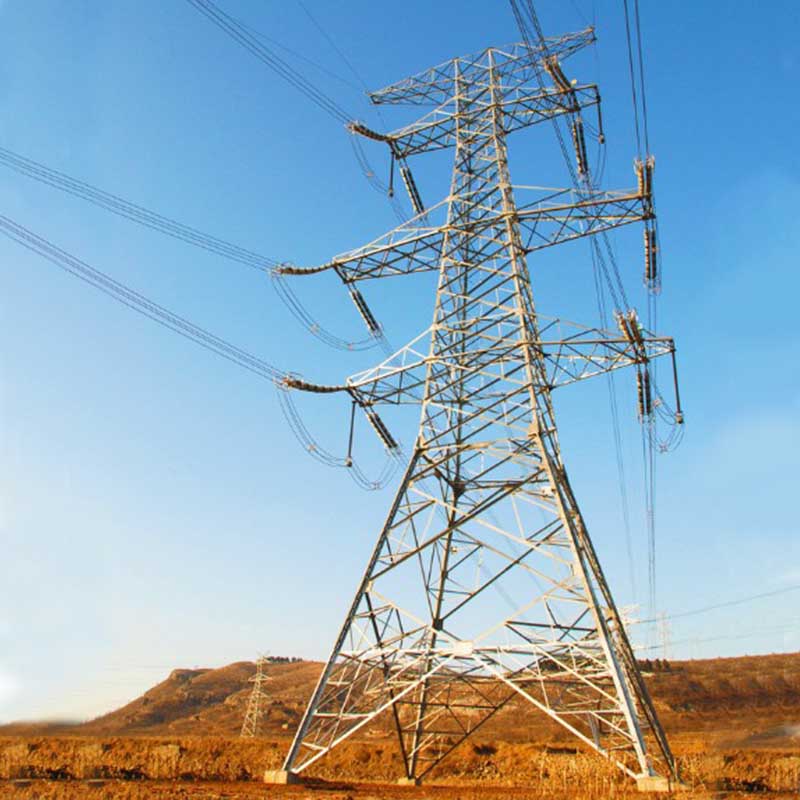Engineering Marvels: Exploring the Structural Design of Galvanized Steel Power Towers
2024-04-10
In the realm of engineering feats that stand as symbols of human ingenuity, Galvanized Steel Structure Power Towers undoubtedly hold a prominent place. These towering structures, often seen dotting landscapes, serve as vital components of our modern infrastructure, facilitating the transmission of electricity across vast distances. Behind their imposing presence lies a meticulous process of structural design, where considerations of load-bearing capacity, height, and configuration intertwine to create robust and reliable installations.
Load-Bearing Capacity: A Foundation of Strength
At the heart of any structural design is the crucial consideration of load-bearing capacity. Galvanized steel, prized for its exceptional strength and corrosion resistance, forms the backbone of power tower construction. Engineers meticulously calculate the anticipated loads—both static and dynamic—that the tower will endure throughout its operational lifetime. These loads encompass not only the weight of the tower itself but also external forces such as wind, ice, and the tension exerted by the transmission lines.
Galvanized steel's inherent properties make it an ideal choice for withstanding these diverse forces. By hot-dipping steel components in zinc, the galvanization process creates a protective layer that enhances durability and extends the lifespan of the structure. This corrosion-resistant coating ensures that the tower maintains its load-bearing capacity even in harsh environmental conditions, safeguarding the integrity of the power transmission system.
Height: Reaching New Heights Safely
The height of a power tower is a critical aspect of its design, dictated by various factors including terrain topology, transmission distance, and regulatory requirements. Engineers must strike a delicate balance between maximizing height to minimize the number of towers needed for long-distance transmission and ensuring structural stability and safety.
Advanced modeling techniques, such as finite element analysis, enable engineers to simulate the behavior of the tower under different loads and environmental conditions. These simulations inform decisions regarding the optimal height-to-base ratio, ensuring that the tower can withstand bending, torsion, and other structural stresses while maintaining stability.
Moreover, the erection process itself poses unique challenges when constructing towering structures. Engineering teams meticulously plan each step, employing specialized equipment and techniques to safely assemble the tower components at dizzying heights. Rigorous quality control measures ensure that every weld, bolt, and connection meets stringent standards, guaranteeing the structural integrity of the completed tower.
Configuration: Designing for Efficiency and Reliability
The configuration of power towers encompasses not only their physical layout but also the arrangement of components such as insulators, conductors, and crossarms. Engineers must optimize this configuration to maximize efficiency, minimize maintenance requirements, and ensure reliable operation under varying conditions.
Factors such as conductor spacing, insulator selection, and tower bracing influence the tower's electrical performance and mechanical stability. By leveraging computational modeling and simulation tools, engineers can analyze different configurations to identify the most suitable design for a given application. This iterative process allows for the refinement of structural details, enhancing the tower's resilience against environmental factors and minimizing the risk of service interruptions.
Furthermore, advancements in materials science and engineering techniques continue to drive innovation in power tower design. From lightweight composite materials for insulators to novel fabrication methods for tower components, ongoing research aims to enhance the efficiency, reliability, and sustainability of galvanized steel power towers.
In Conclusion: Engineering Excellence in Every Tower
Galvanized Steel Structure Power Towers stand as testament to the ingenuity and precision of structural engineering. Through meticulous design considerations encompassing load-bearing capacity, height optimization, and configuration efficiency, engineers craft towering structures that form the backbone of our modern infrastructure. As we look to the future, continued advancements in materials, modeling techniques, and construction methodologies promise to further elevate the performance and resilience of these essential installations, ensuring the reliable transmission of electricity for generations to come.



